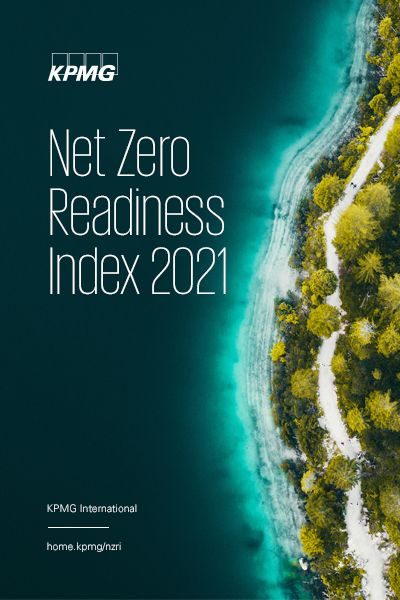Australia has not yet confirmed a national target date to achieve Net Zero and still relies heavily on coal. However, state governments, the private sector and the public are pushing to accelerate the transition with heavy investment in the development of clean hydrogen.
Political pressure
Australia ranks fifth on the policies and enabling environment category, in part due to the strength of the federal government’s legal and regulatory infrastructure which will help it to tackle climate change and strong reporting requirements that are in place and provide a very clear picture of emissions.
In April 2021, Prime Minister Scott Morrison said the country would move to Net Zero “as quickly as possible and preferably by 2050,” but has not committed to this.1 “The interjection of climate policy into many other elements of foreign policy – including free trade agreements with the EU, the proliferation of proposed carbon border adjustment mechanisms or critical mineral cooperation strategies with the US – has raised the pressure on Canberra to make deeper, more credible climate commitments,” says Henning Gloystein, Director, Energy, Climate and Resources, Eurasia Group. “2021 will prove to be a pivotal year to understand if the EU, as well as countries like the US and UK, will use carrots or sticks to exhort further emission reductions from Australia.”
Many businesses are showing greater willingness than the federal government to join states in setting emission reduction and Net Zero targets, influenced by customers locally and internationally as well as investors. “It’s a pretty obvious direction of travel, and so even in the absence of strong federal policy direction they are getting on with it,” says Adrian King, Partner in Charge, Climate Change and Sustainability, KPMG Australia.
Sectoral exposure
Agriculture, land use and forestry is currently the country’s second-largest sector for emissions with a high emissions intensity and high dependence on meat and dairy in the country. Meat and Livestock Australia, a trade body, has said that red meat production can be carbon neutral as early as 2030 through changes including feed and farm management.2 It has collaborated with the national science agency CSIRO and James Cook University to develop FutureFeed, a seaweed-based dietary supplement that could greatly reduce methane emissions from cows and other ruminants.3


The country also continues to rely on coal both for power and exports from its large mining industry, which will challenge its decarbonization efforts. However, there are significant investments being made in the production of clean hydrogen and export plans in collaboration with Japan and the EU.
State level activity
All of Australia’s states plan to get at least half their electricity from renewables by 2030 as part of the targets each has set to reach Net Zero by 2050, with energy primarily a state rather than federal responsibility. “The consensus across the states is influencing the way businesses are approaching this in Australia,” says Barry Sterland, National Lead on Energy Transition, KPMG Australia.
New South Wales’s electricity infrastructure roadmap plans five renewable energy zones in rural areas that will use wind, solar, battery storage and high-voltage grids to replace capacity ahead of the closure of thermal power stations.4 Victoria’s recently-announced emissions target to halve emissions by 2030 incorporated the outcome of the negotiated closure of a major coal-fired power station. Beyond that many commentators consider further penetration of renewable energy and emissions reductions towards Net Zero look likely to lead to the early closure of the state’s coal-fired power stations.5 Other states also have ambitious plans, with both South Australia and Tasmania planning to generate all the electricity they need from renewables and sell surpluses.6
Despite legislation being in place, Australia has not enacted regulations that would enable an emissions trading system and it repealed a carbon pricing system for industry. Sterland says that transport, where responsibilities for what is currently a very carbon-intensive sector are split between federal and state governments, lacks a coordinated national approach despite action by states such as New South Wales and Victoria to promote electric vehicle adoption.
Argentina | Brazil | Canada | Chile | China | Denmark | France | Germany | Hungary | India | Indonesia | Italy | Japan | Malaysia |
Mexico | New Zealand | Nigeria | Norway | Poland | Russia | Saudi Arabia | Singapore | South Africa | South Korea | Spain | Sweden | Thailand |
Turkey | United Arab Emirates | United Kingdom | United States
1 Colin Packham and Sonali Paul, ‘Australia shies from backing net zero by 2050 ahead of Biden climate summit’, Reuters, 20 April 2021. https://www.reuters.com/business/environment/australia-shies-backing-net-zero-by-2050-ahead-biden-climate-summit-2021-04-20/
2 ‘Red meat industry can be carbon neutral by 2030’, Meat and Livestock Australia, 22 November 2017. https://www.mla.com.au/news-and-events/industry-news/archived/2017/red-meat-industry-can-be-carbon-neutral-by-2030/
3 FutureFeed, accessed July 2021. https://www.future-feed.com/
4 ‘Electricity Infrastructure Roadmap’, New South Wales government, accessed July 2021. https://energy.nsw.gov.au/government-and-regulation/electricity-infrastructure-roadmap
5 Jarrod Whittaker and Mim Cook, ‘Victorian coal plants likely to close early with new emissions target, analysts say’, ABC News, 3 May 2021. https://www.abc.net.au/news/2021-05-03/emissions-target-to-force-coal-closures/100111694
6 Tim Nelson and Joel Gilmore, ‘Australia’s states are forging ahead with ambitious emissions reductions. Imagine if they worked together’, The Conversation, 5 May 2021. https://theconversation.com/australias-states-are-forging-ahead-with-ambitious-emissions-reductions-imagine-if-they-worked-together-160191





